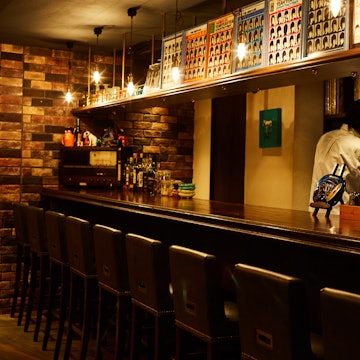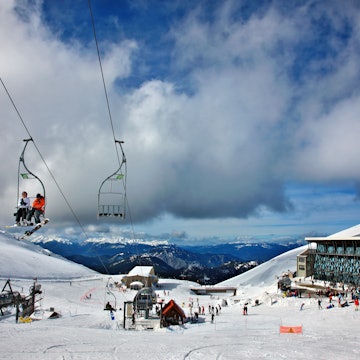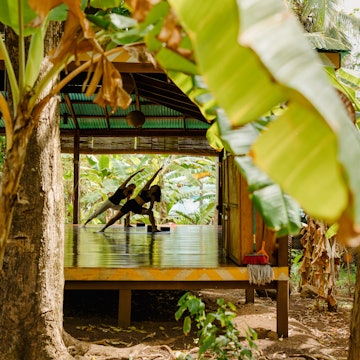
A sake tour of Japan: Get a taste of the nation’s best nihonshu
Sponsored by

Feb 1, 2022 • 10 min read
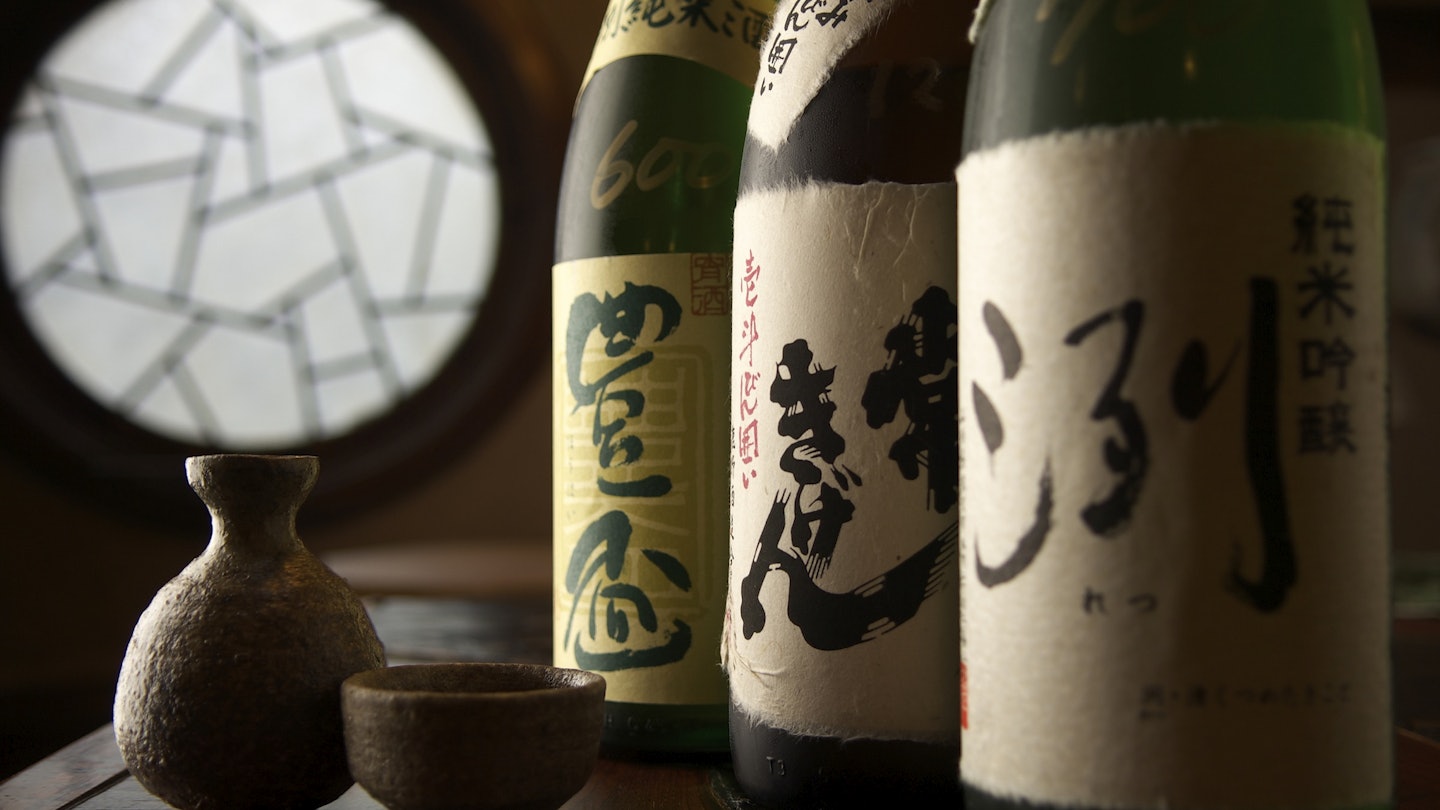
With approximately 1,500 breweries in Japan, there’s a local sake around almost every corner © Getty Images
Japanese sake, or nihonshu as it is known in Japan, is the country’s representative drink. With approximately 1,500 kura (breweries) spanning the archipelago, there’s a ji-zake (local sake) around almost every corner.
Containing only four ingredients – rice, kōji (rice mold), water and yeast – even the smallest variations in raw materials, climate and technique make for an extremely different version of this rice wine. This has led to strong regional flavor profiles that make exploring Japan through its regional sakes an adventure all its own.
Thanks to new technologies, time-honored techniques can be perfected in ways that were not possible in the past, and in an effort to differentiate themselves in a time of unprecedented consumer choice, breweries are innovating with a renewed creative thirst that is elevating this traditional drink into new territory. If there was ever a time to get into the exciting world of sake, it is now.
Here we’ll explore eight of the most renowned destinations for sake in Japan, three on a “Northern Route” and five on a “Southern Route,” easily linked by the capital Tokyo in between.
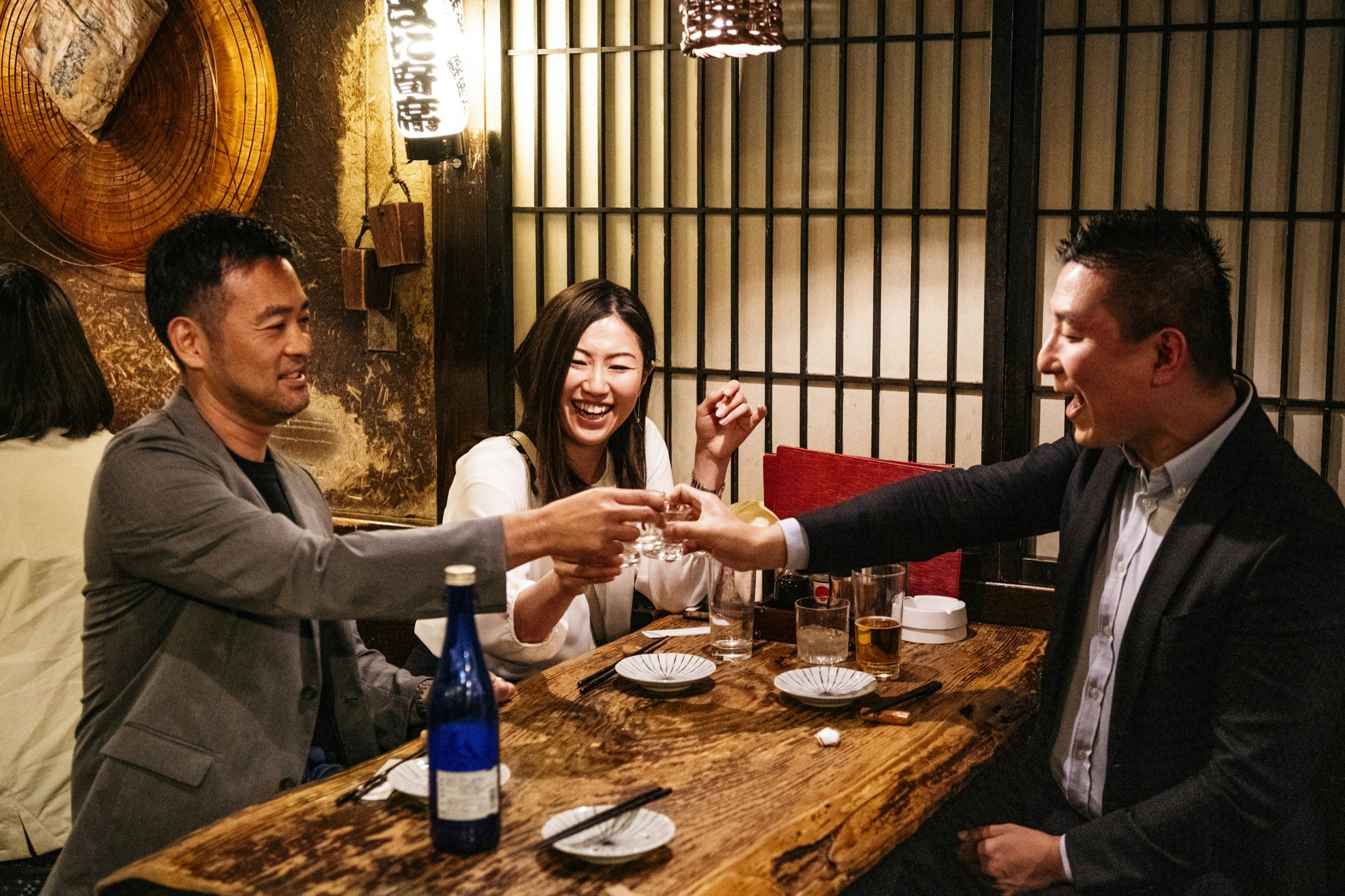
Southern Route
The Southern Route focuses on the “Big Three” or the Three Major Sake Breweries in Japan, centering around Kyoto, Osaka and Hiroshima, making them easy to incorporate into any sightseeing itinerary.
Getting started: Start in Osaka and take the Hanshin Railway from either Namba or Umeda Stations. Stops of interest in the Nada-Gogō sake brewery district include Uozaki, Sumiyoshi, Ishiyagawa and Oishi.

Nada-Gogō, Hyōgo Prefecture
Nada-Gogō or “The Five Villages of Nada” refers to five groupings of sake breweries in the cities of Kobe and Nishinomiya, within easy reach of Osaka. This coastal cluster of breweries accounts for an incredible 25 percent of domestic sake production, making it the leading sake region by volume in the country.
The port-side location has given Nada-Gogō some historical advantages with an easy shipping route to Edo (the ancient name for Tokyo), but its enduring legacy has to be credited to two of the most important factors that go into a successful kura: quality ingredients and talented brewers, or tōji.
A pivotal ingredient in rice wine is of course quality rice. Eighty percent of Yamadanishiki, considered the “king of sake rice,” is cultivated in Hyōgo Prefecture, giving Nada-Gogō bountiful local access to this top resource.
Not only that, the region’s “Tamba tōji,” named after the Tamba district (the eastern part of present-day Hyōgo Prefecture), are considered to be in the three top groups of sake brewers. The Tamba tōji use a slow and labor-intensive traditional method called kimoto not commonly used in present-day sake making.
Onward journey: Less than 15 minutes by shinkansen to Kyoto from Shin-Osaka Station, or 30 minutes by regular train services. From Kyoto Station, take a local train to Fushimi on the Kintetsu Kyoto Line, 10 minutes.
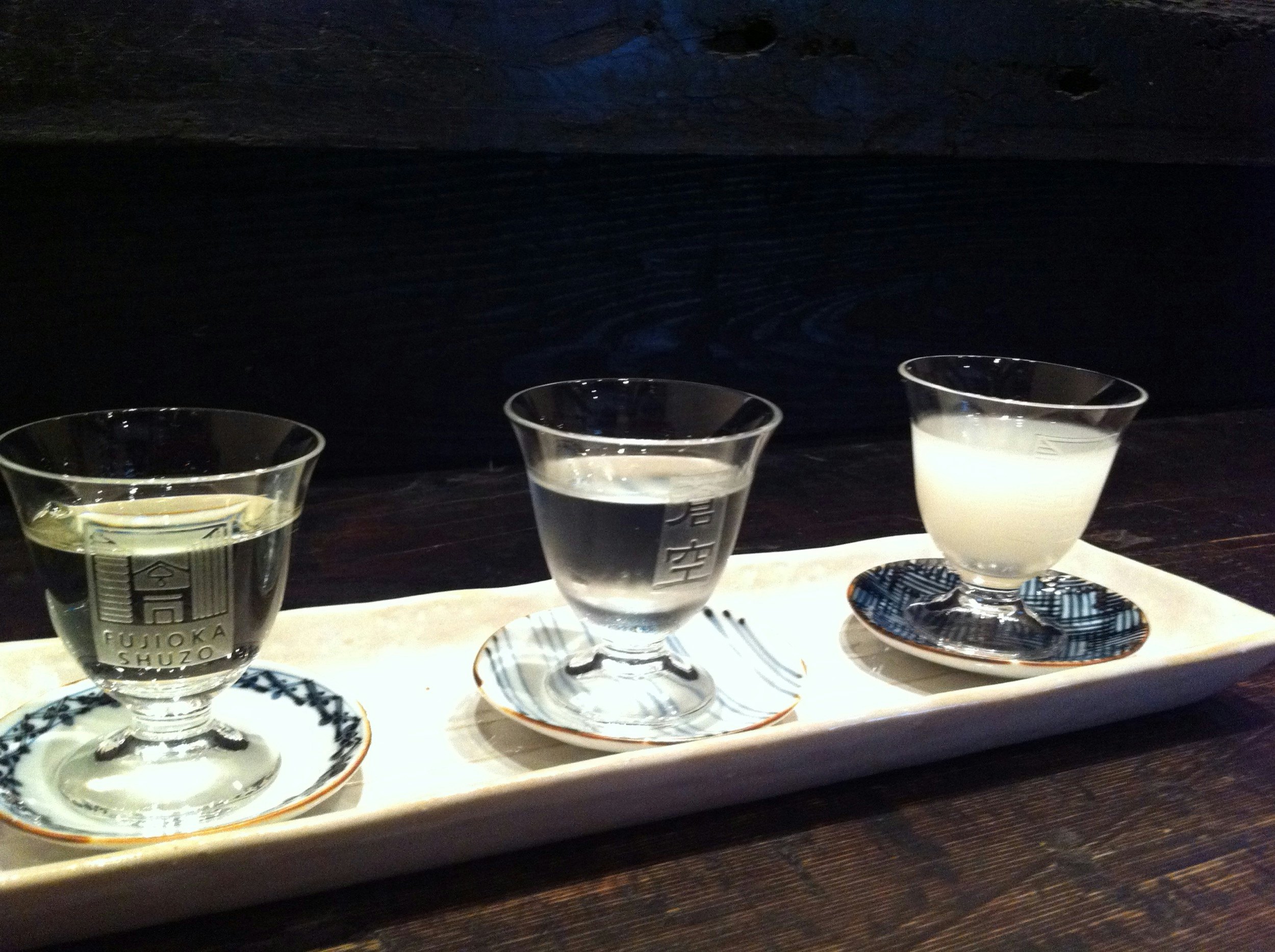
Fushimi, Kyoto Prefecture
Fushimi has made an international name for itself over recent years thanks to the surge in popularity of Fushimi-Inari Shrine with its hundreds of vermillion hill-side torii gates. But what you might not know is that the shrine is dedicated to the Shinto god of rice (Inari) and Fushimi is one of the most important rice wine locations in the country.
The main reason sake production flourished in Fushimi is due to the abundance and quality of its groundwater. When you consider that 80 percent of sake is water, the quality and composition of this key ingredient is paramount to the taste of the final product.
The famous “Seven Wells of Fushimi” produce spring water of medium hardness with moderate amounts of calcium and potassium. This is what gives Fushimi sake its signature delicate flavor and mellow mouthfeel. Compared with the hard miyamizu water high in potassium and phosphoric acid used in neighboring Nada-Gogō that results in a very bold flavor profile, these two regions couldn’t produce sake that is any more different.
Fushimi exudes the traditional feel visitors have come to expect from Kyoto and its sake district along the willow-lined Horikawa River doesn’t disappoint. From spring to autumn, a 50-minute Jikkokubune boat ride is a pleasant way to explore the charms of the historic buildings alongside the changing seasonal landscape.
Right by the launch for the Jikkokubune is Gekkeikan, the second largest sake brewery on Earth and one of the world’s oldest companies, founded here in 1637. The adjacent Gekkeikan Okura Sake Museum provides excellent insight into the sake brewing process with English explanations, and includes free tasting and a small take-home bottle of sake inclusive in the 600-yen entry free.
Onward journey: An hour and 40 minutes on the shinkansen from Kyoto to Hiroshima. Then an easy under 40-minute train jaunt (no transfers) from Hiroshima Station on the JR Sanyo line to Saijo.

Saijo, Hiroshima
Just a stone’s throw from Saijo Station, you’ll find yourself on Sakagura-dori or ‘Sake Brewery Street’. Here you can find seven of the eight breweries of Saijo, making it an ideal spot for brewery-hopping and becoming acquainted with the many different types of sake.
Sake is divided into two major categories, futsū-shu or regular sake, and tokutei meishō-shu, meaning “Special Designation Sake,” which constitutes about 25 percent of the domestic market. One of the major factors that distinguish these premium sakes is the degree to which the rice is polished.
Sake rice, which is different to regular table rice, has starches concentrated in the center of the grain that are fundamental to the fermentation process. Milling away at the outer layer removes fats and proteins that affect this process and create less desirable flavor components.
Generally speaking, the more the rice is polished, the more premium the sake. This is measured by a term called seimaibuai, which is denoted in percentage points and refers to the amount of rice that remains after milling. For example, a seimaibuai of 70 percent means that 30 percent of the rice kernel has been removed.
Saijo is considered the “home of ginjō-shu,” a collective term which refers to the top four premium sake grades, making it the perfect location to try some special designation sakes.
Onward journey: Return to Shin-Osaka Station by shinkansen in 90 minutes (or 1 hour 45 mins to Kyoto), or travel all the way from Hiroshima to Tokyo in just under 4 hours.

The Northern Route
These stops will take you to some of the best spots for sake enthusiasts in northern Japan and allow exploration of prefectures not on the usual tourist trail. Start in Tokyo and take the shinkansen two hours north-west to Niigata City.
Niigata Prefecture
At almost 100 kura, Niigata has the most sake breweries of any prefecture in Japan. This comes as no coincidence; if ever there was a land created for making top-quality sake, Niigata would be it. Not only is it renowned for its rice production, it also has one of the highest annual snowfalls, which melt into the most pristine waters come spring.
This pure spring water gives Niigata sake its signature crisp and refreshing taste with a touch of dryness. The snow too is used as a natural accompaniment to the brewing process, such as in the “Yukimuro” or snow cellars used by some breweries in the making of snow-aged sake.
At the beginning of spring each year, up to a thousand tons of fresh snow is put into the cellar, gently keeping the sake at a constant 3 degrees Celsius year-round without the need for electricity. After several years in the snow-laden cellar, the sake becomes incredibly mellow and smooth.
You can start your sake exploration as soon as you reach JR Niigata Station, where there are more than 100 vending machines with sake from all over the prefecture. Five hundred yen will get you five tokens to try five different sakes of your choosing.
Onward journey: 3 hours 20 minutes to Yamagata (fastest route using a combination of limited express, local trains and shinkansen) or take the shinkansen all the way via Omiya (Saitama), 4.5 hours.

Yamagata Prefecture
Yamagata is the first prefecture in Japan to receive Geographical Indication (GI) for its sake. This designation, recognized by the World Trade Organization, certifies a product’s origin and quality.
Other well-known international examples of GI include Champagne and Darjeeling tea, and acknowledges the important role of physical location, such as soil, water and climate, in the resulting product.
Yamagata’s development of its own proprietary strains of sake rice, yeast and kōji all contribute to its unique taste, which can typically be described as soft and light yet full of flavor, with a pleasantly sweet aroma.
Yamagata has undergone a sake renaissance over the past few decades, thanks in large part to a concerted and unique open collaboration between the public and private sectors, and among brewers themselves, in what has been a historically guarded profession. This has allowed Yamagata to not only keep up with a changing industry, but rise to the top as one of Japan’s most important sake regions.
Onward journey: 1 hour 10 mins on the shinkansen to Fukushima.

Fukushima Prefecture
A sake tour of Japan wouldn’t be complete without the darling of Japan’s sake industry, Fukushima Prefecture. Fukushima’s sake has dominated the prestigious “Annual Japan Sake Awards” in recent years, awarded the most Gold Prizes of any prefecture since 2013.
While a general assessment of Fukushima’s overall sake profile would be soft and big on subtlety, it’s three very different climates means you can expect to find a wide range of flavors.
The prefecture is home to more than 60 breweries, many of which are open to the public for tasting and tours, allowing you to sample the many faces of Fukushima sake for yourself.
Onward journey: Less than 2 hours on the shinkansen to Akita, via Sendai (Miyagi).

Akita Prefecture
Nicknamed the “Land of Sake,” Akita Prefecture follows the simple formula of good rice + good water = good sake. Blessed with an incredible natural environment along with the “cold brewing” techniques of the region’s Sannai Tōji master brewers, and you have a product with built-in excellence.
Akita Prefecture has developed its own local variety of sake rice called Akita Sake Komachi, which not only works in perfect harmony with local conditions and Akita kōji, but the higher levels of glucose result in an elegantly sweet and fragrant brew with a wide-variety of fruity notes.
While it is a relatively new rice on the sake scene, it’s rapidly become the prefecture’s most popular rice for premium sake.
Onward journey: 3.5 to 4 hours on the shinkansen to Utsunomiya (Tochigi), via Sendai (Miyagi). Nikko can be reached in about 45 mins from Utsunomiya on the JR Nikko Line.

Tochigi Prefecture
Tochigi Prefecture is probably most well-known to international visitors for its incredible UNESCO World Heritage-listed Tōshō-gū Shrine in Nikko. Sake lovers can combine a visit to this historic site with sampling of local sakes at the prefecture’s 37 breweries and numerous local watering holes.
Adjacent to the Tōshō-gū Shrine complex is the even older Futarasan Shrine, which is well-worth a visit and has a delightful link to sake. Behind the main building (Honden), be sure to take a look at the small pond of natural spring water. Known as Futara Spiritual Spring, it is believed the water not only possesses healing properties for eye diseases, but is also very good for making rice wine, earning it the nickname the “Fountain of Sake.”
In the tearoom, you can try drinks made using the spiritual spring water, including amazake, a sweet and thick, low- or non-alcohol sake made from either sake lees or rice kōji, typically served heated in the cooler months. It’s a great way to dip your toes into the many ways to drink sake – at room temperature, chilled, warm or hot.
Historically, Tochigi’s sake has been quite sweet, but in recent years the flavor profile has diversified to include lighter and drier brews that accommodate a wide variety of flavor preferences.
For those who’d like to continue their enjoyment of sake on their return home, consider purchasing a beautiful Mashiko-yaki sake cup set. This local-style pottery hailing from Mashiko, one of Japan’s most well-known pottery towns, makes for the perfect take-home souvenir.
Return journey: Less than one hour from Utsunomiya on the shinkansen back to Tokyo.
You might also like
Secrets of sake: The history and traditions of Japan’s national drink
Sponsored by Japan Travel & Tourism
As a travel entertainment and inspirational media outlet, we sometimes incorporate brand sponsors into our efforts. This activity is clearly labeled across our platforms.
This story was crafted collaboratively between Japan Travel & Tourism and Lonely Planet. Both parties provided research and curated content to produce this story. We disclose when information isn’t ours.
With sponsored content, both Lonely Planet and our brand partners have specific responsibilities:
-
Brand partner
Determines the concept, provides briefing, research material, and may provide feedback.
-
Lonely Planet
We provide expertise, firsthand insights, and verify with third-party sources when needed.











